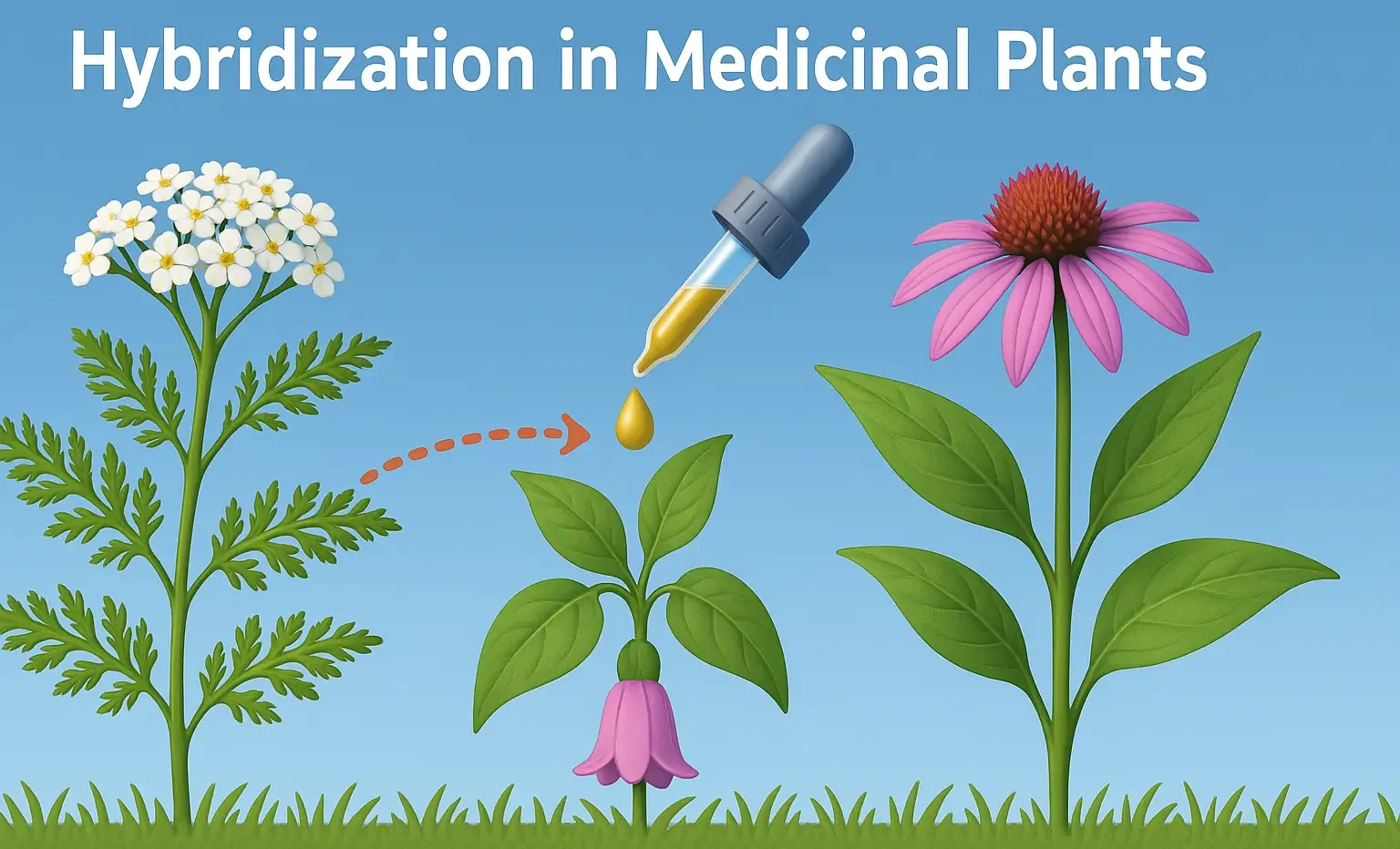Hybridization in Medicinal Plants combines traits from two species to enhance yield, quality, and disease resistance.
What is Hybridization in Medicinal Plants?
- Hybridization is the process of crossing genetically different plant species or varieties to create offspring with desirable traits, improving yield, quality, and resistance.
Types of Hybridization
-
Intraspecific Hybridization:
- Crossing between different varieties of the same species.
- Example: Aloe vera – Varieties crossed for increased gel yield.
-
Interspecific Hybridization:
- Crossing between different species of the same genus.
- Example: Mentha arvensis × Mentha piperita – Hybrid mint species with better oil yield.
-
Intergeneric Hybridization:
- Crossing between different genera.
- Example: Rare in medicinal plants but possible through protoplast fusion.
Methods of Hybridization
- Controlled Pollination: Manually transferring pollen from one plant to another.
- Tissue Culture & Somatic Hybridization: Fusion of protoplasts (cell components without cell walls) to create hybrids.
Advertisements
Procedure of Hybridization (in Short)
- Selection of Parents – Choose two genetically different plants with desirable traits.
- Emasculation – Remove anthers from the female parent to prevent self-pollination (if necessary).
- Bagging – Cover the emasculated flower to prevent unwanted pollination.
- Pollination – Transfer pollen from the selected male parent to the stigma of the female parent.
- Re-Bagging – Cover the pollinated flower to protect it from contamination.
- Seed Collection – Harvest hybrid seeds once they mature.
- Germination & Selection – Grow hybrid seeds and select plants with desired traits.
- Stabilization – Grow multiple generations to ensure the hybrid traits are stable.
Applications in Medicinal Plants
-
Improved Essential Oil Content
- Mentha hybrids – Higher menthol content for pharmaceutical use.
-
Higher Yield & Faster Growth
- Ginseng hybrids (Panax species) – Faster growth and increased ginsenoside content.
-
Disease Resistance
- Hybrid Neem Trees (Azadirachta indica) – More resistant to pests and diseases.
Advantages of Hybridization in Medicinal Plants
- Combines the best traits from both parent plants.
- Can create disease-resistant, high-yielding medicinal plants.
- Increases secondary metabolite production.
Disadvantages of Hybridization in Medicinal Plants
- Takes multiple generations to stabilize traits.
- Some hybrids may be sterile.
Click Here to Watch the Best Pharma Videos
Advertisements

